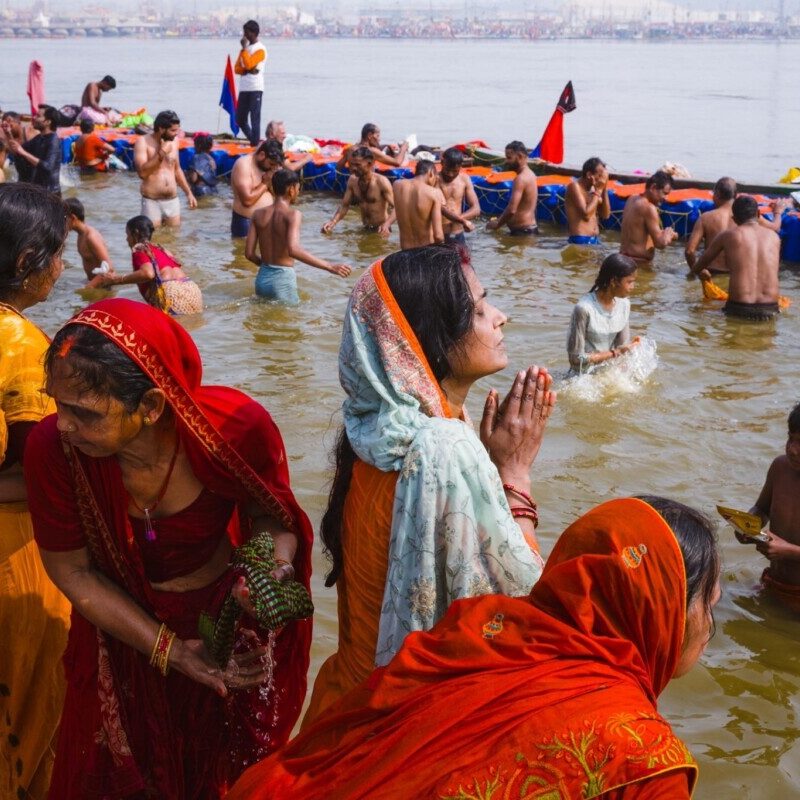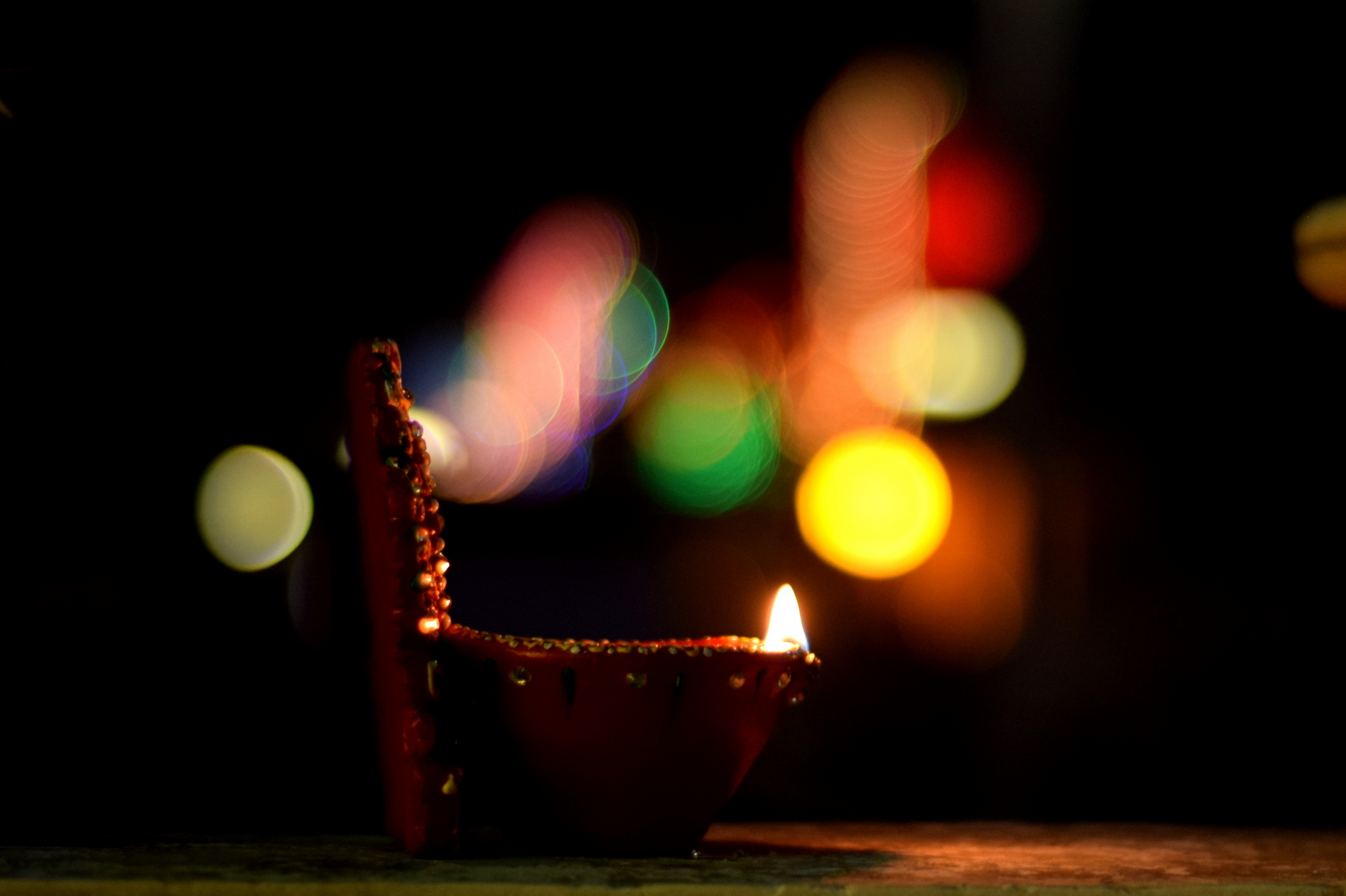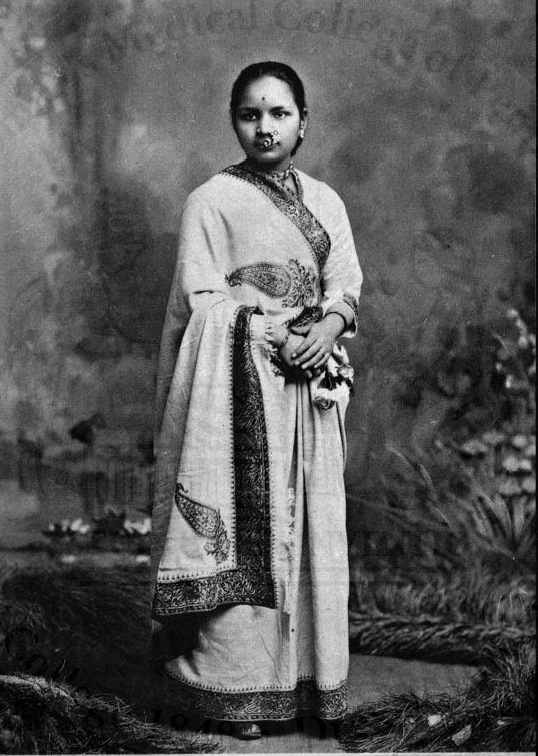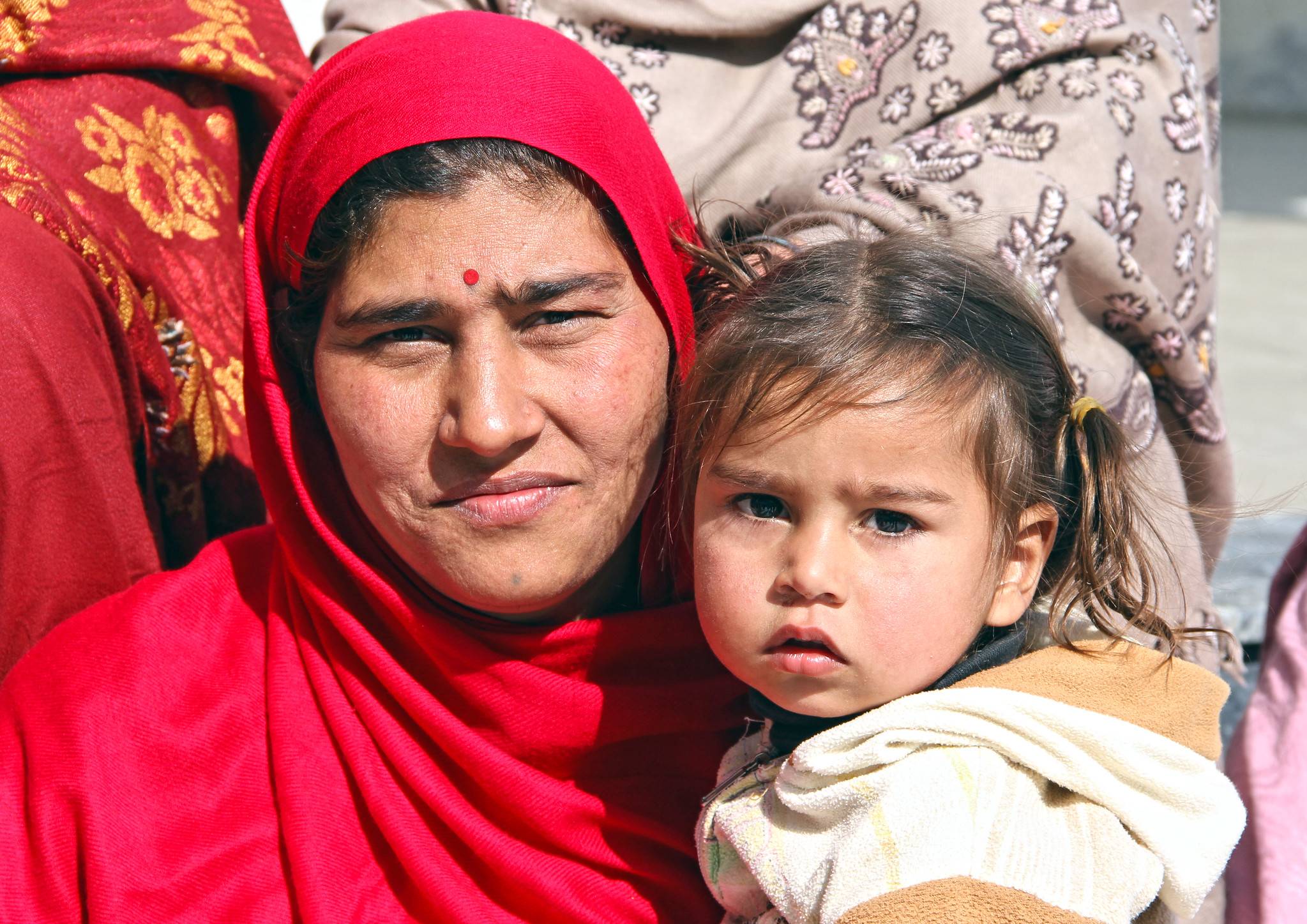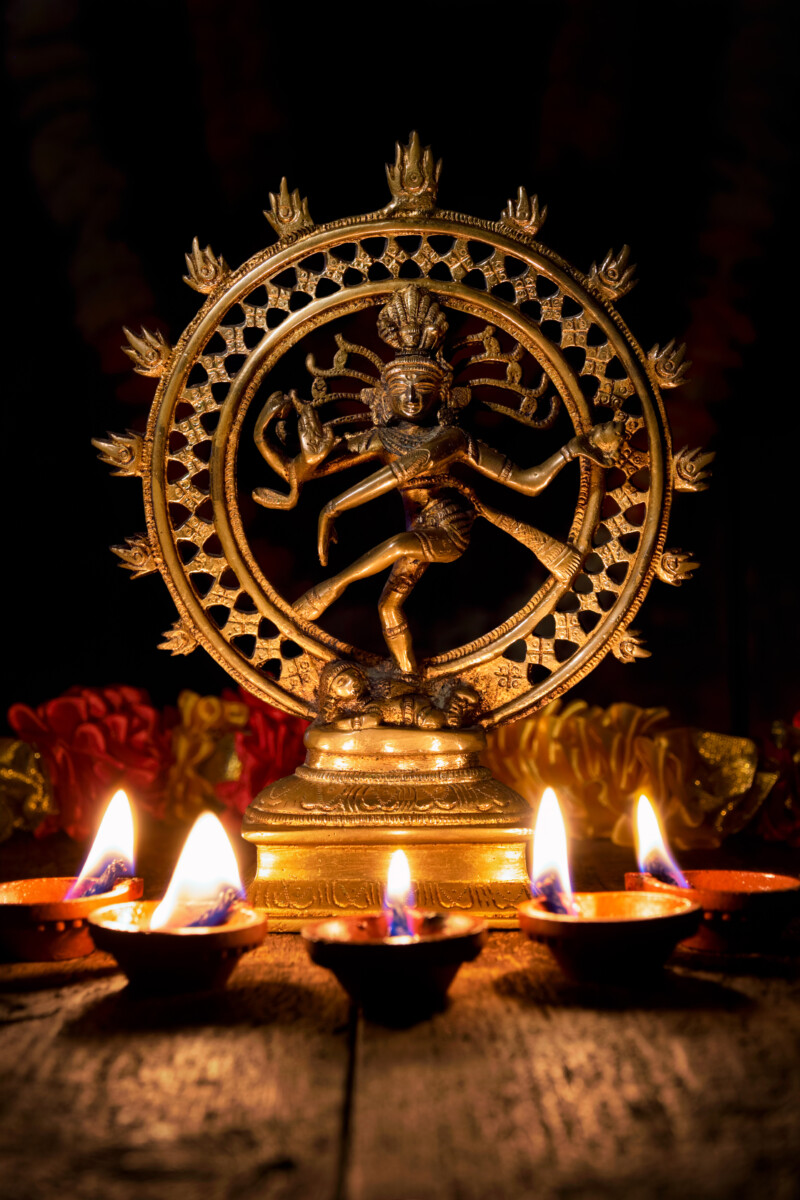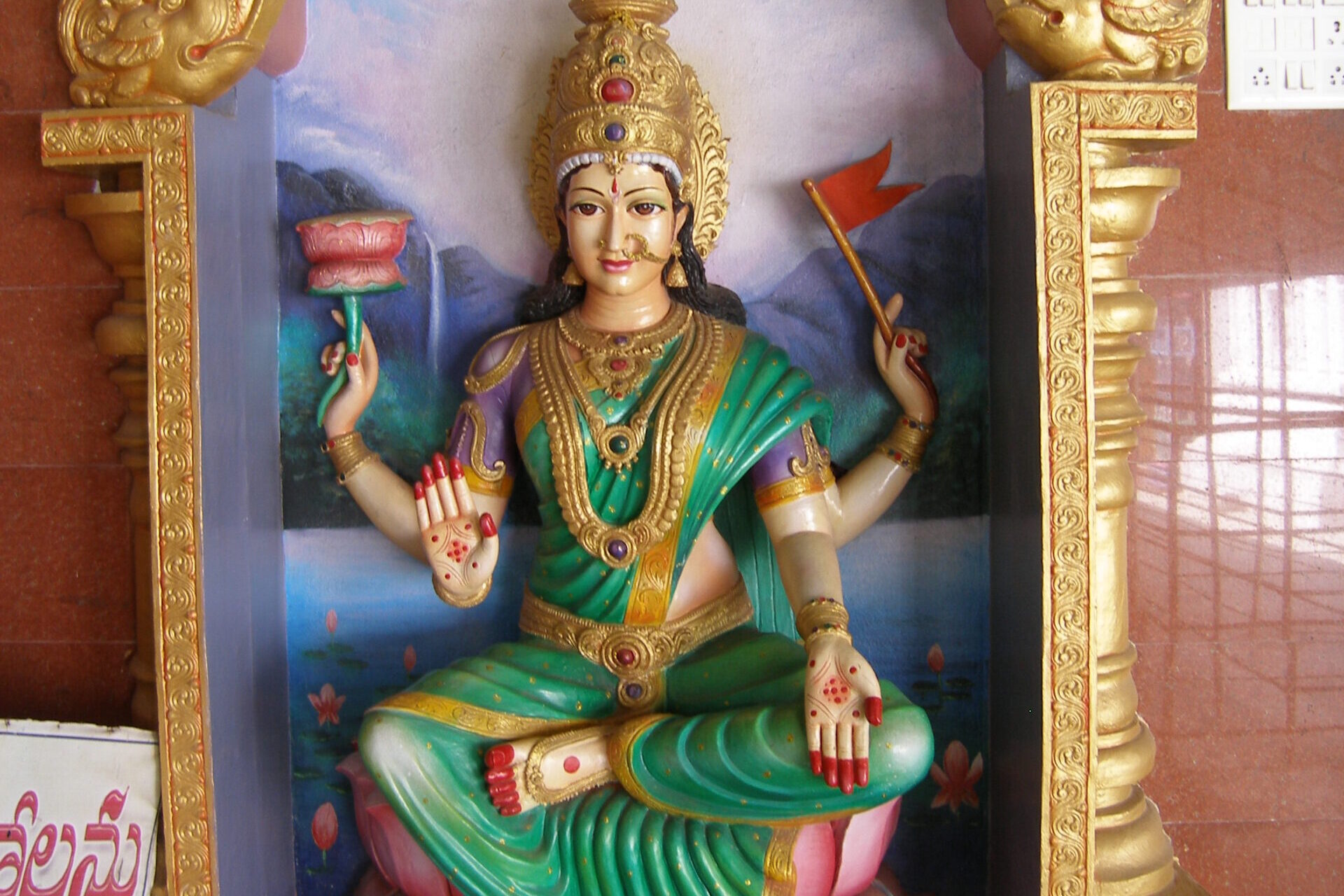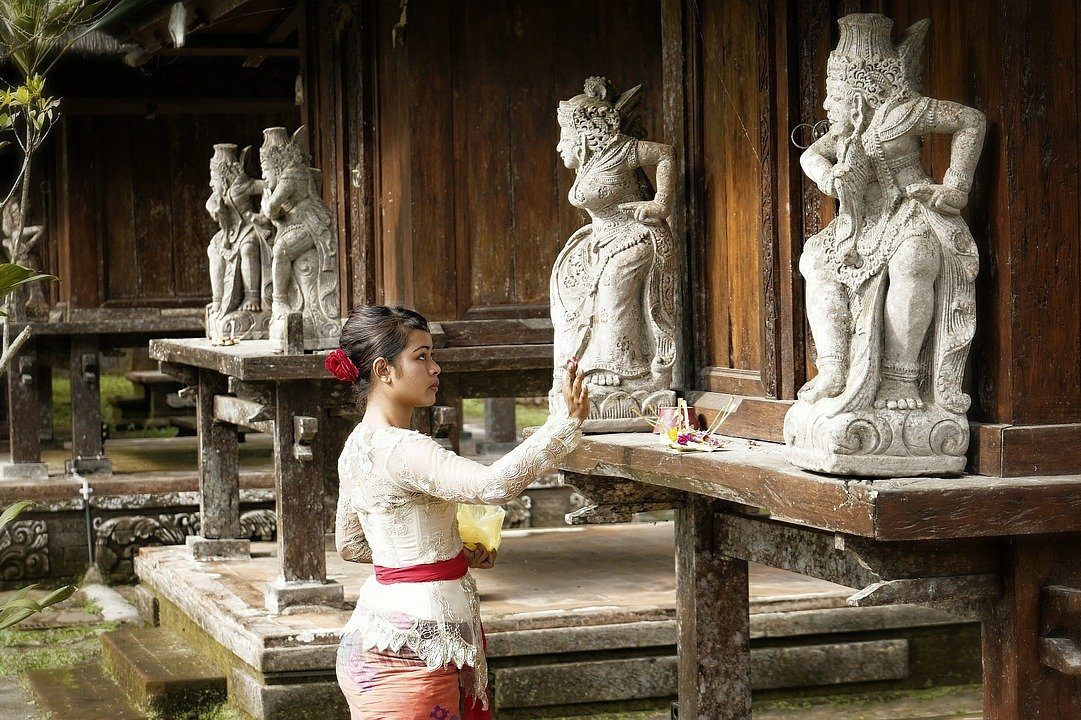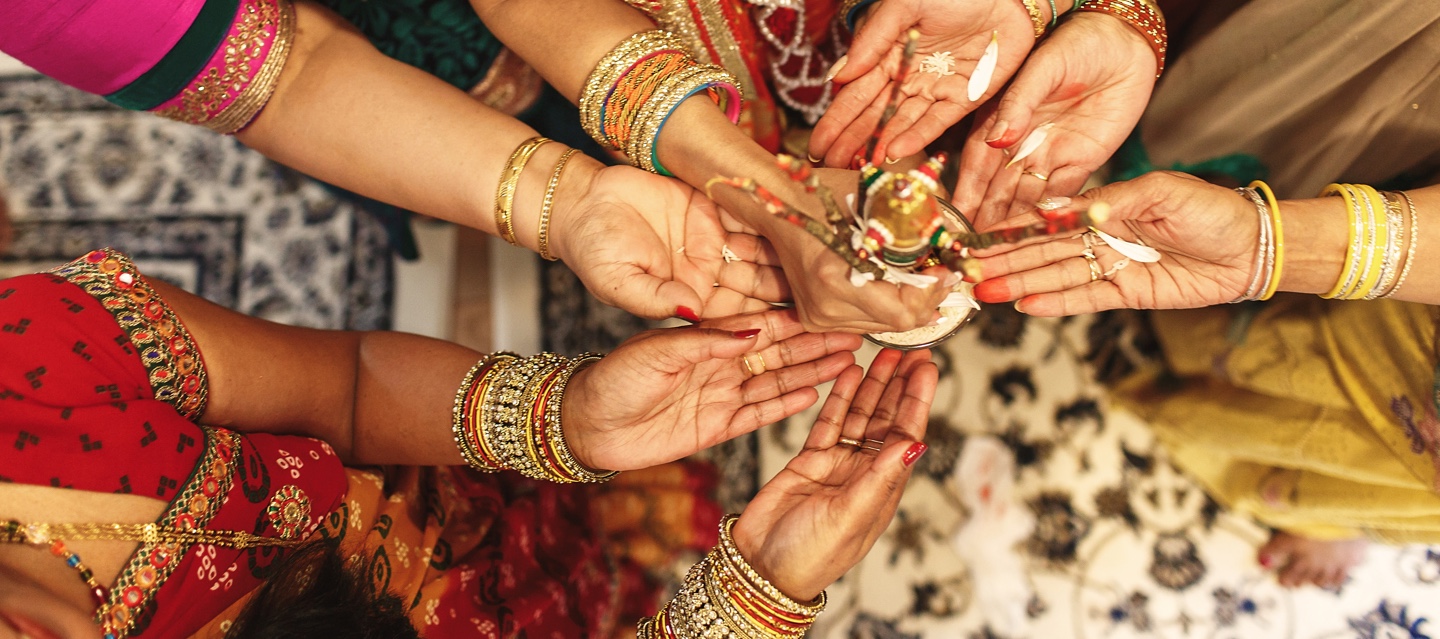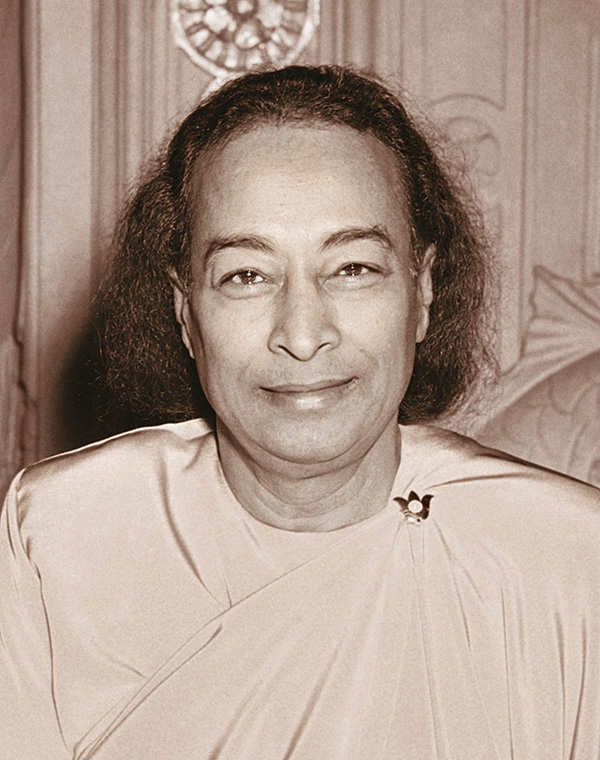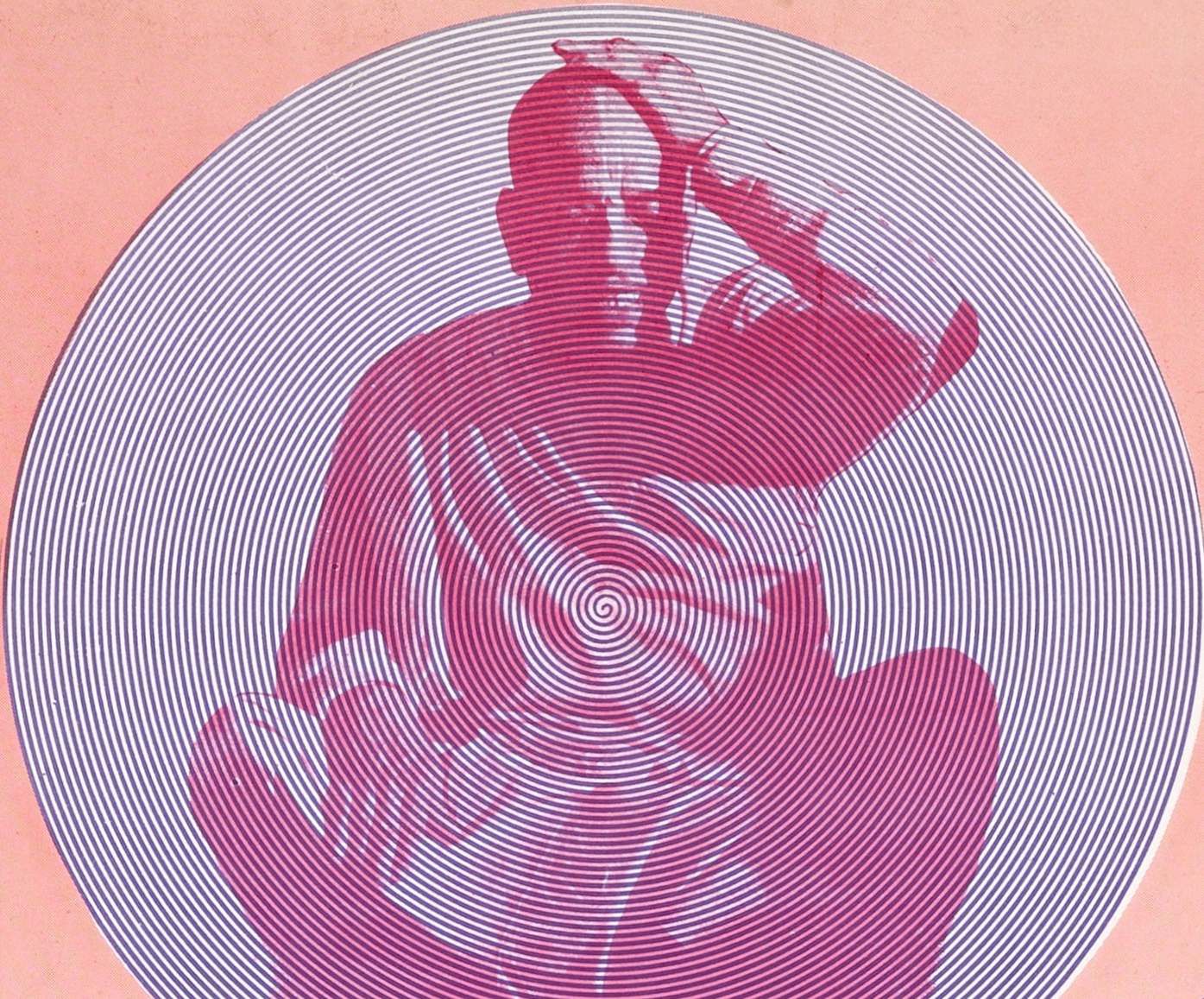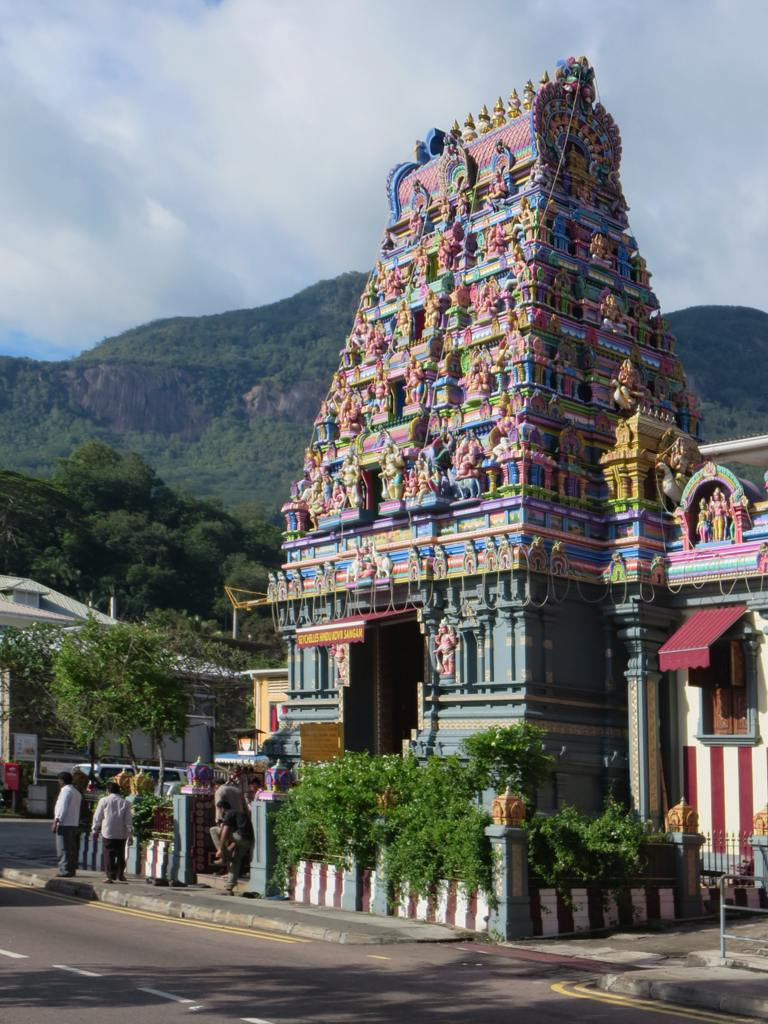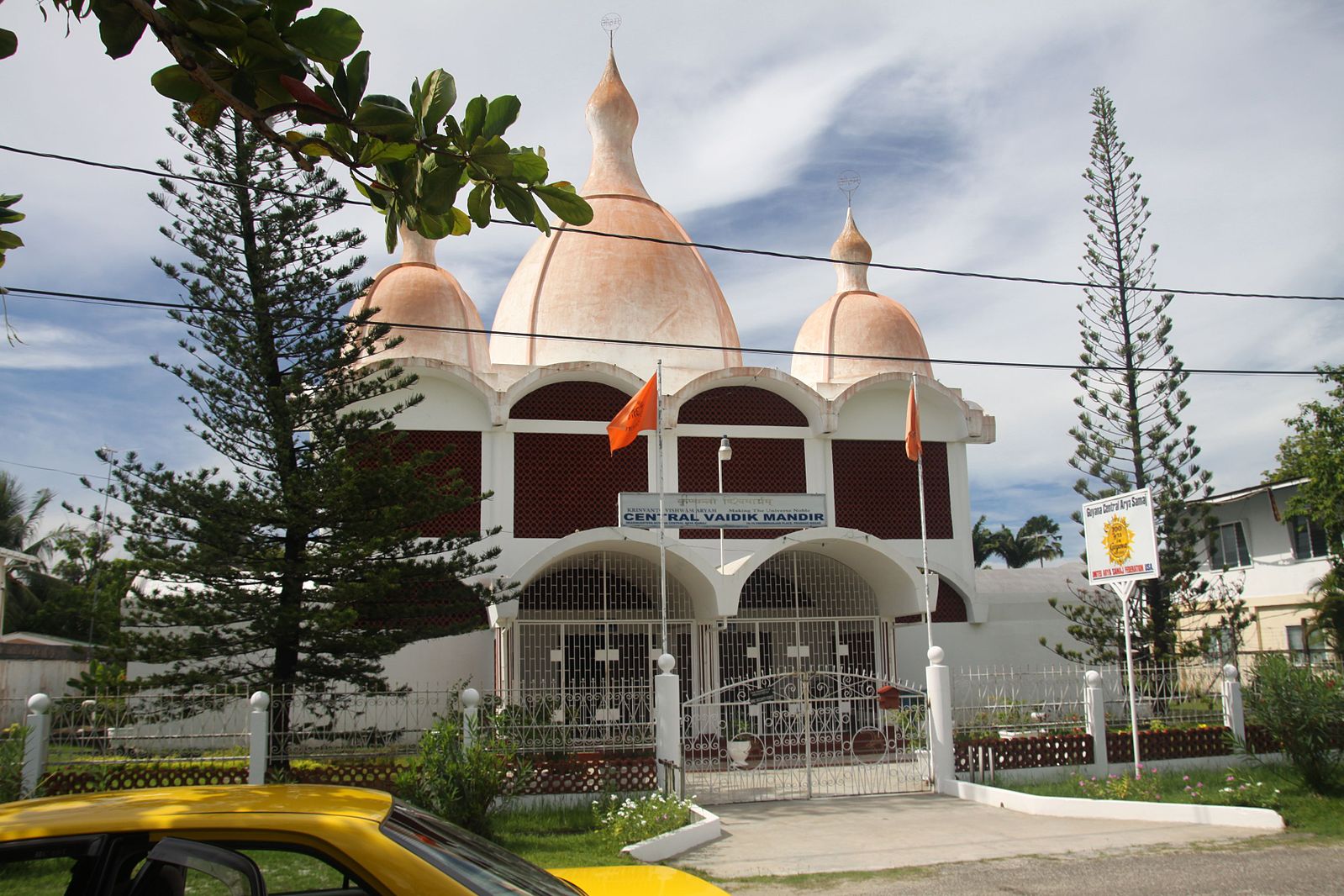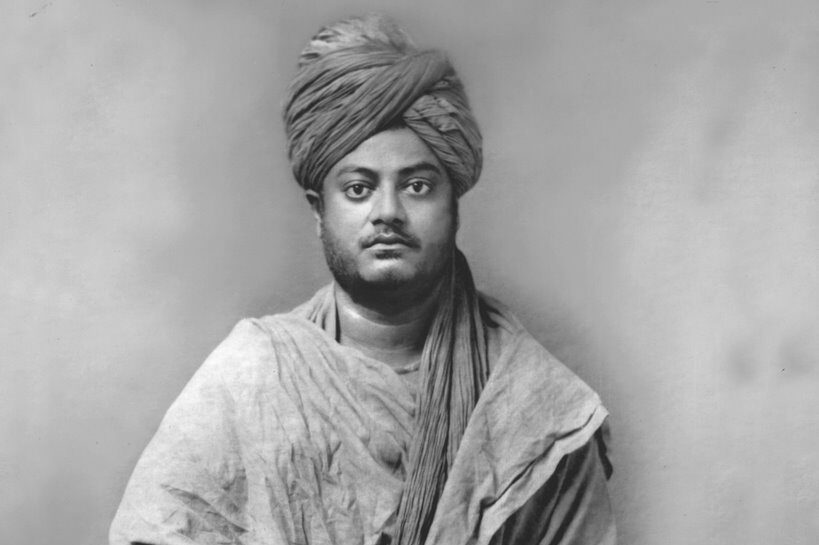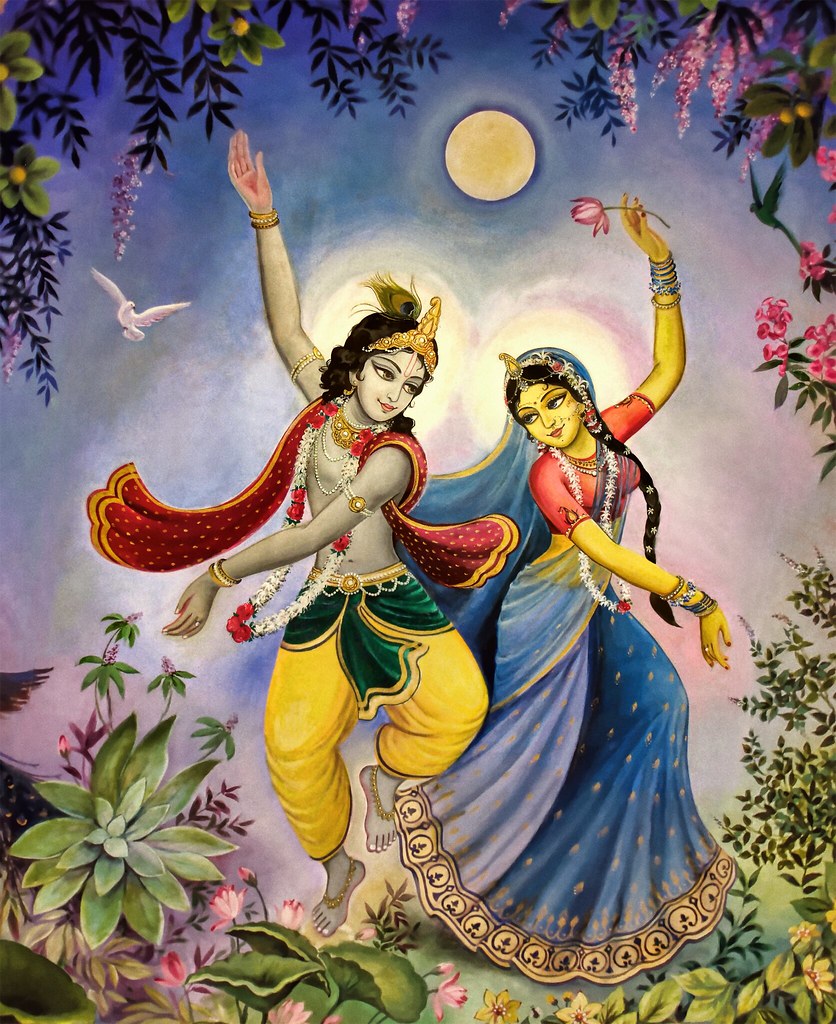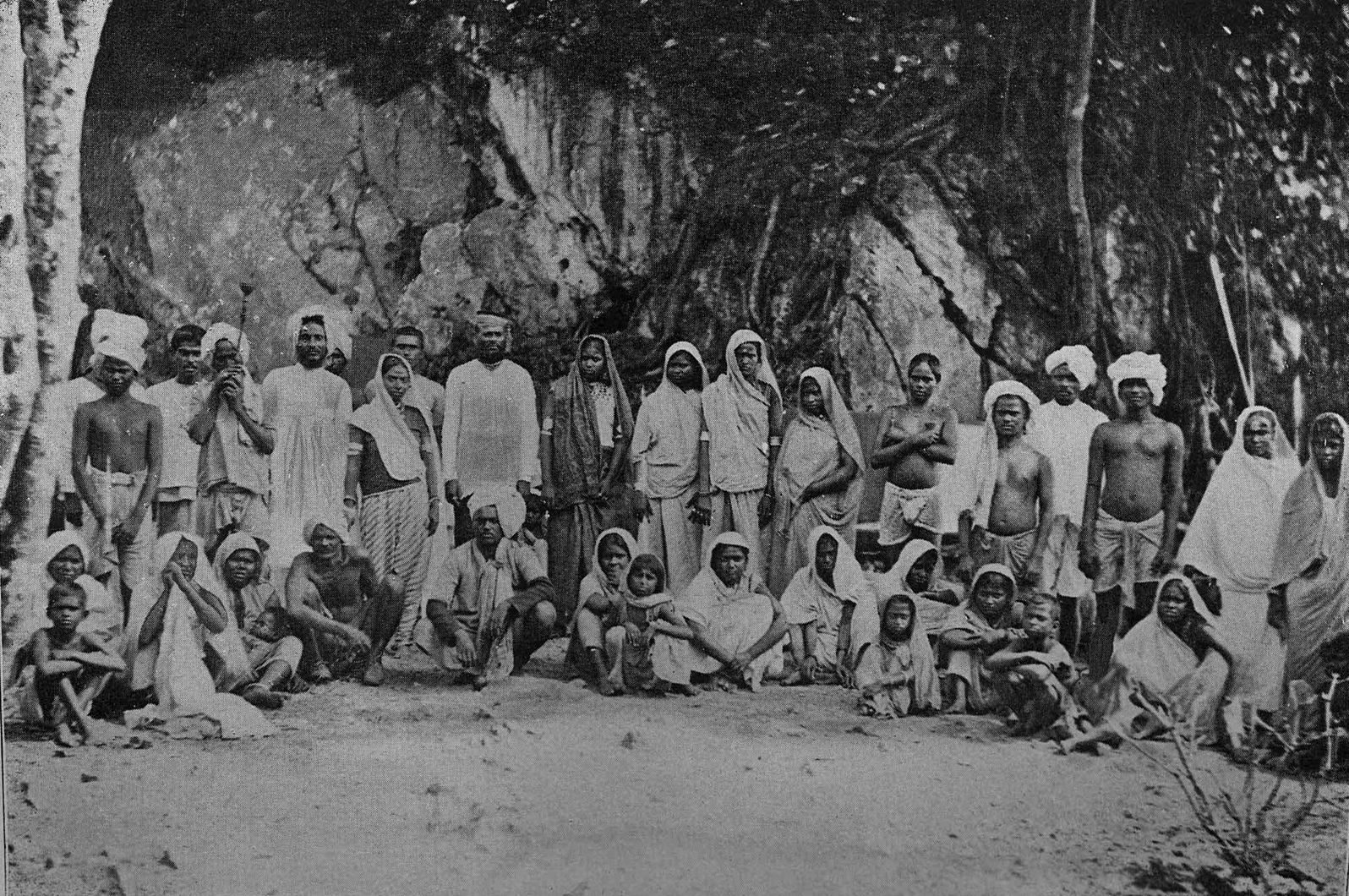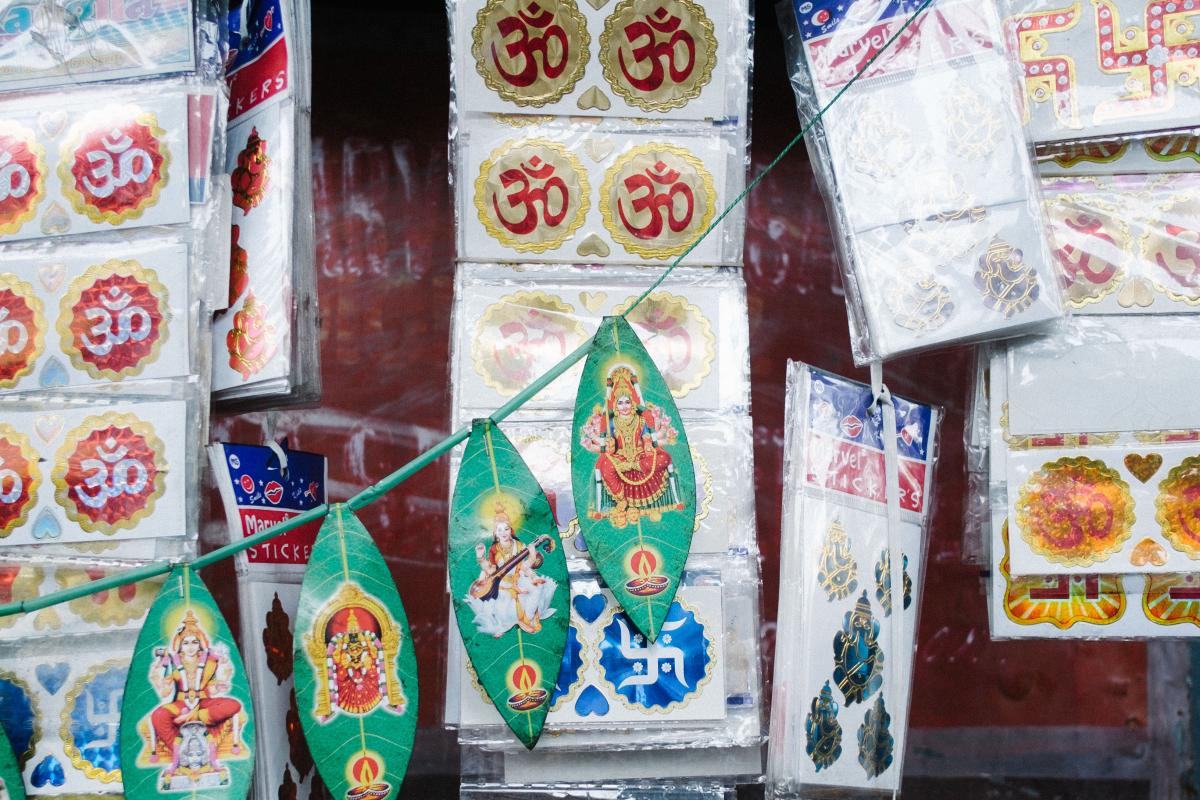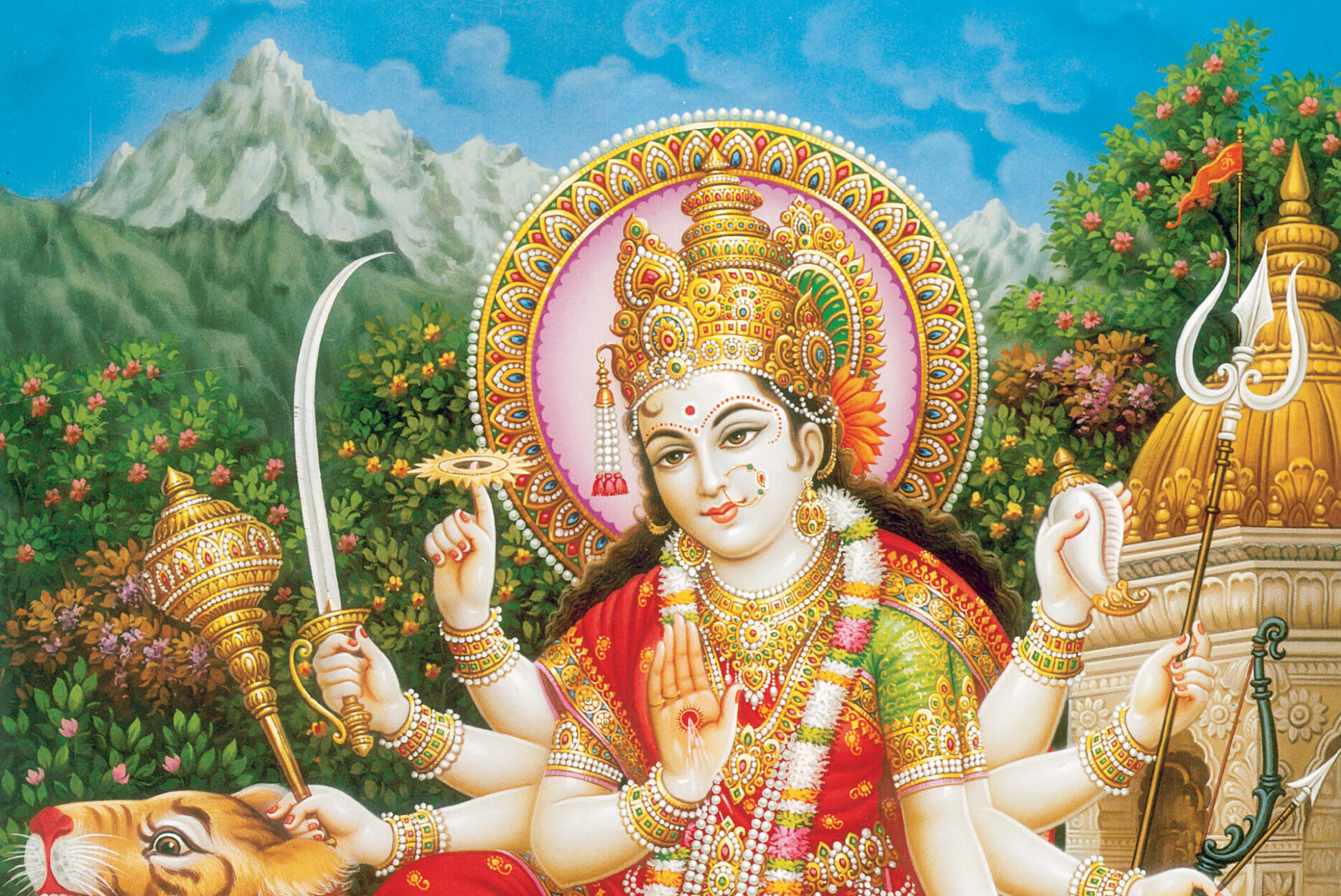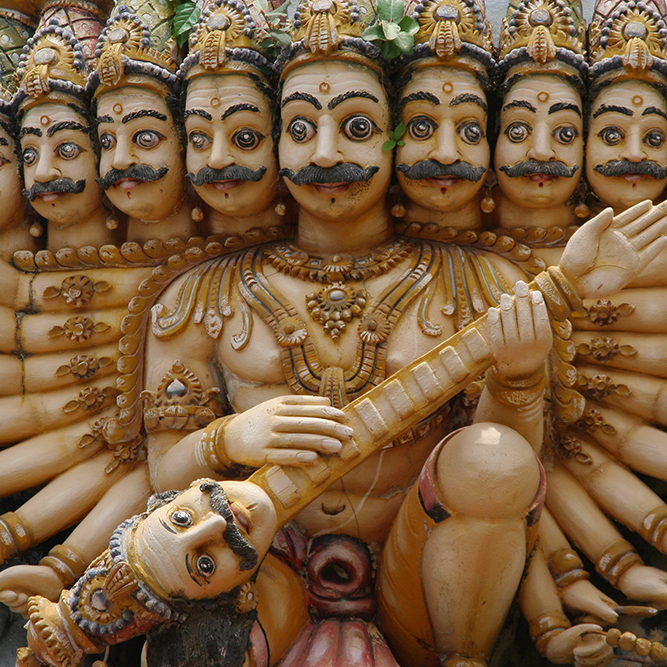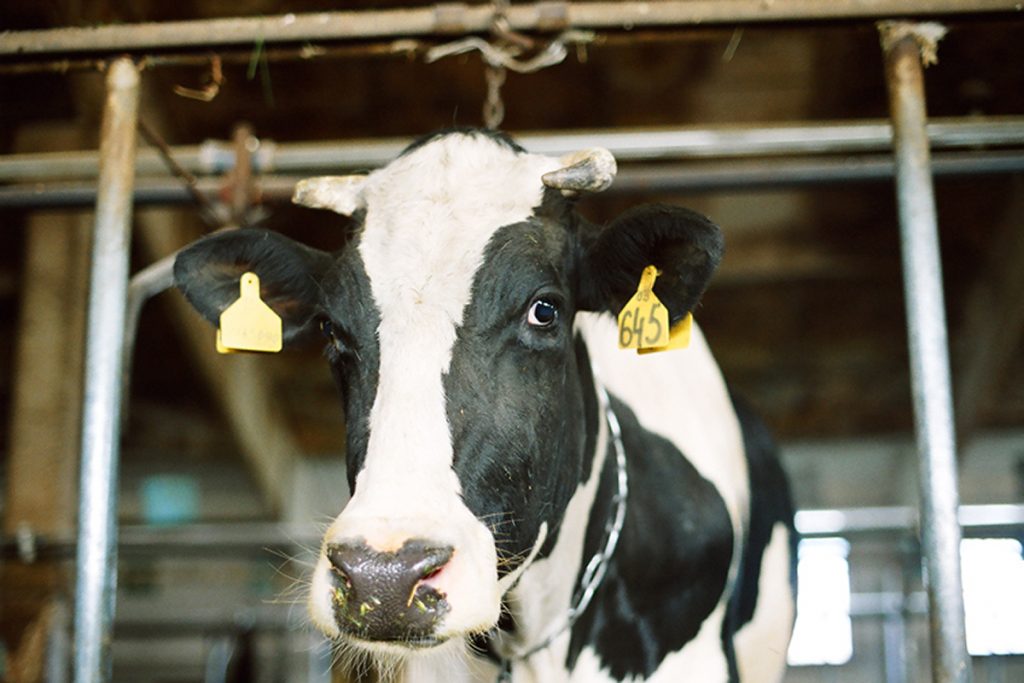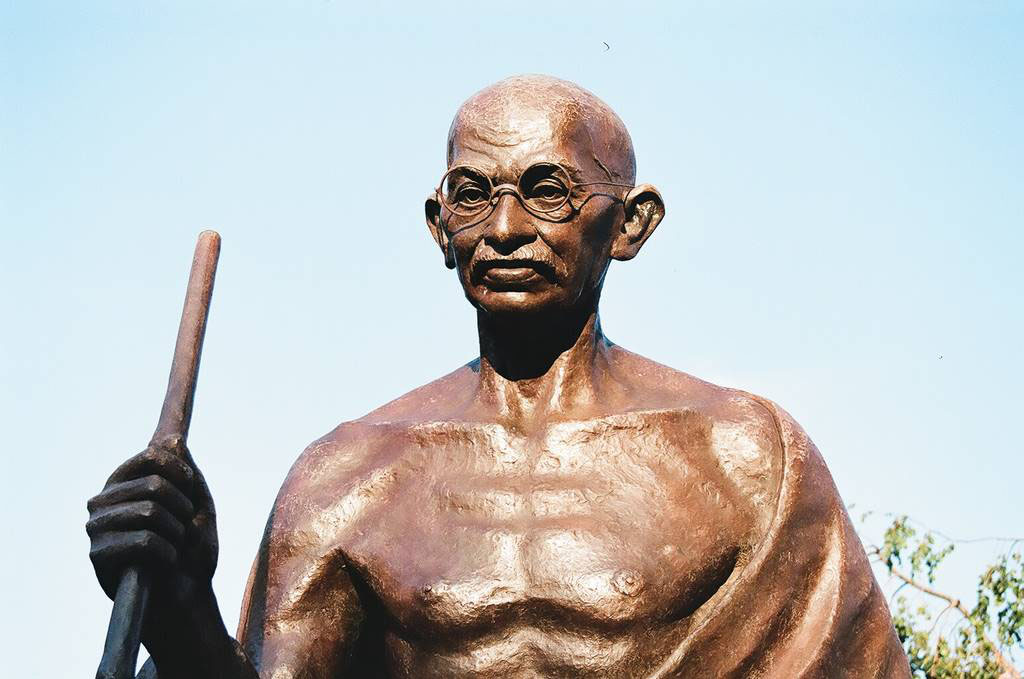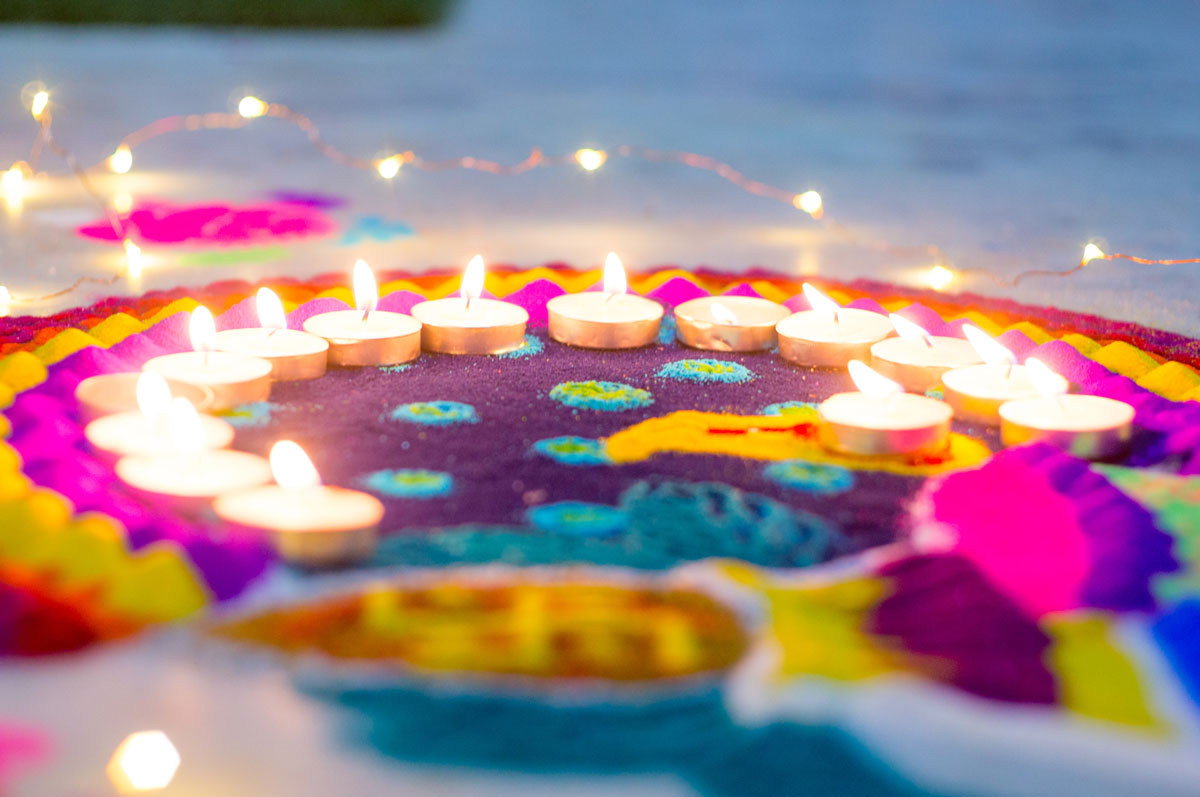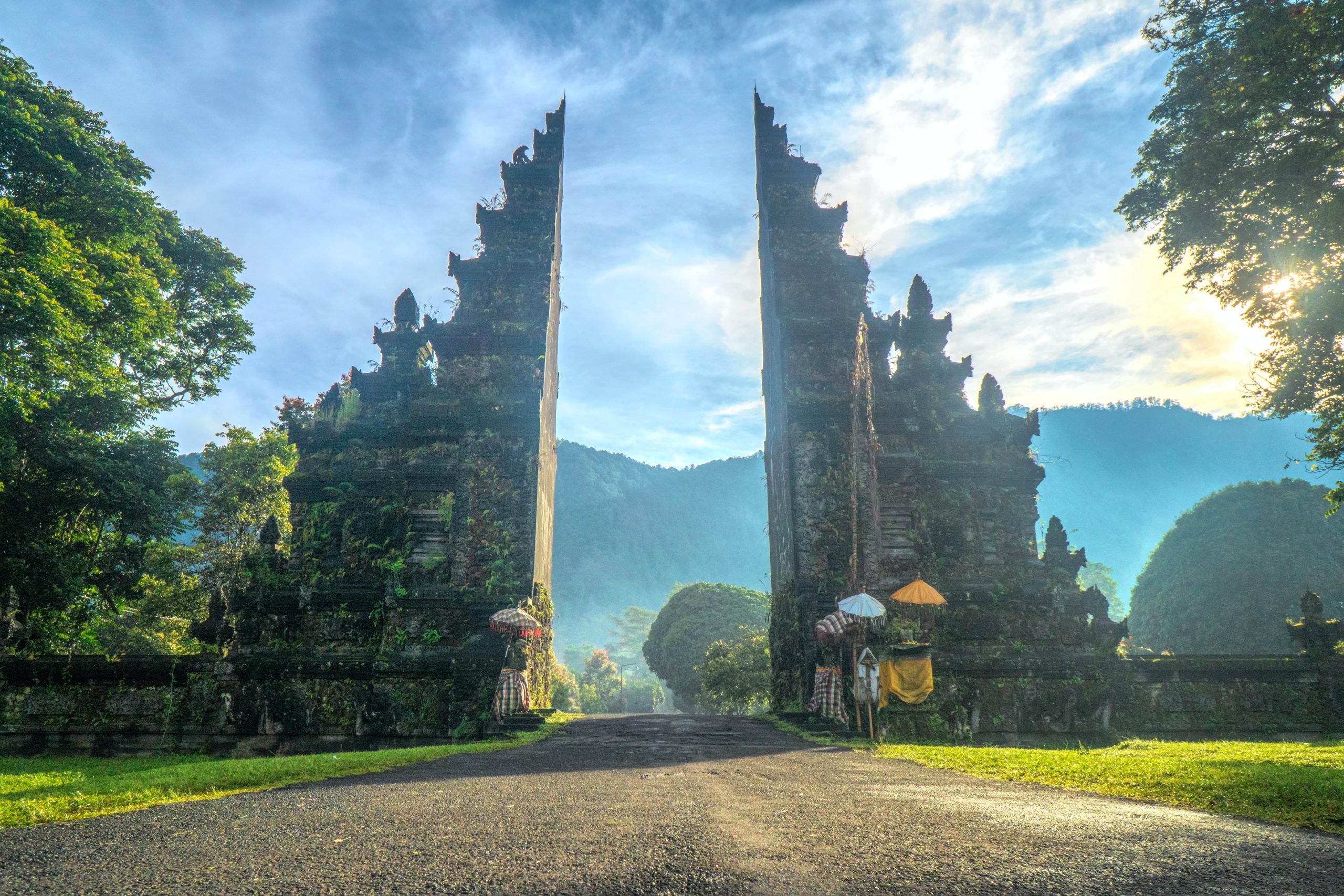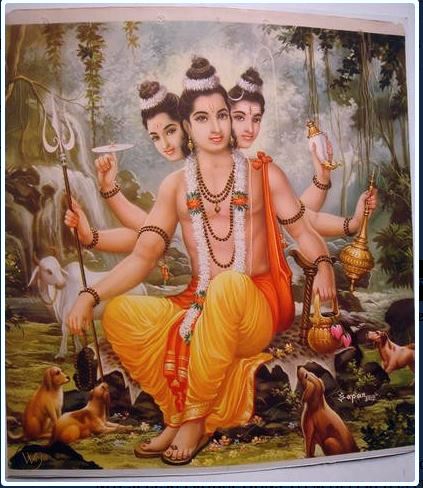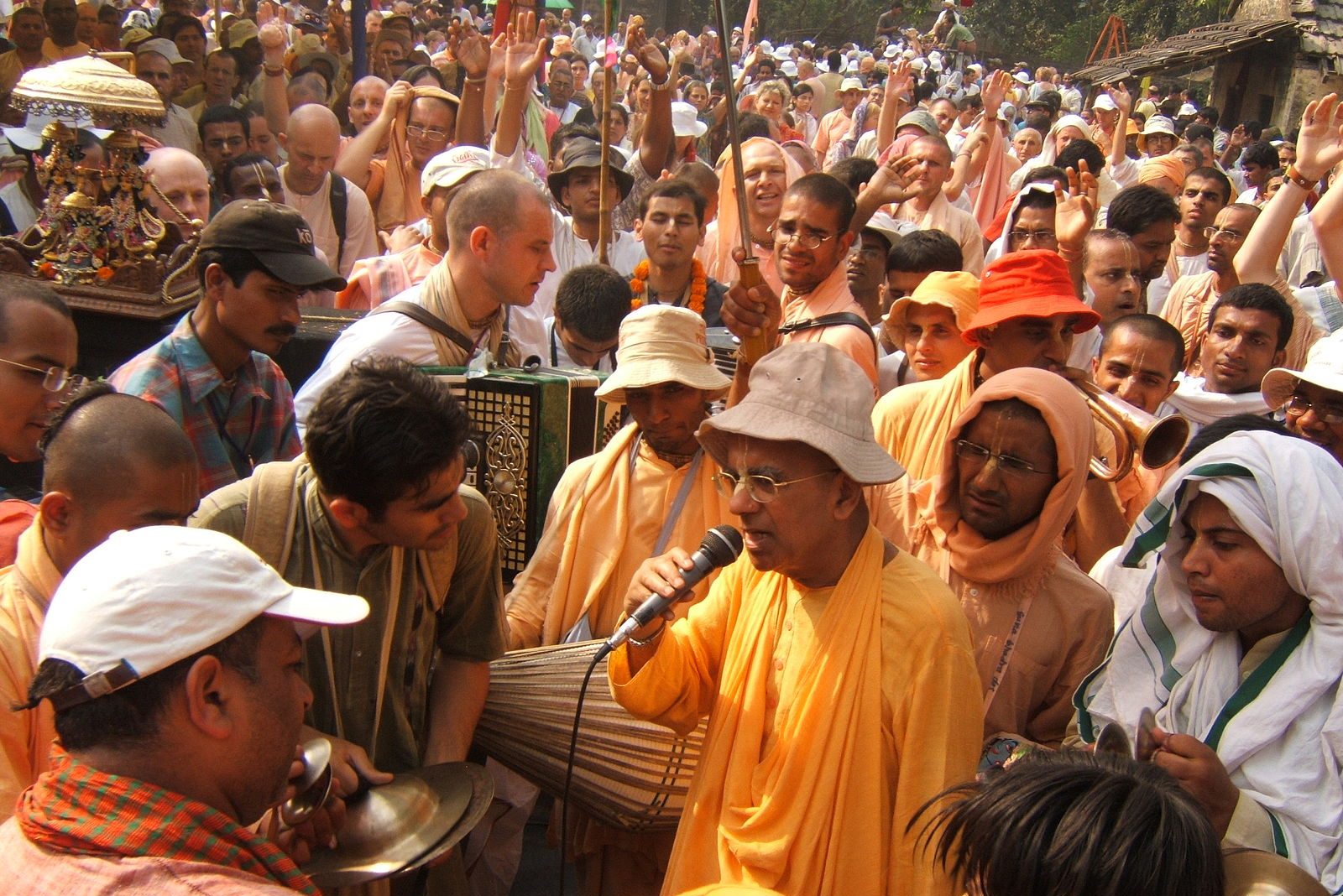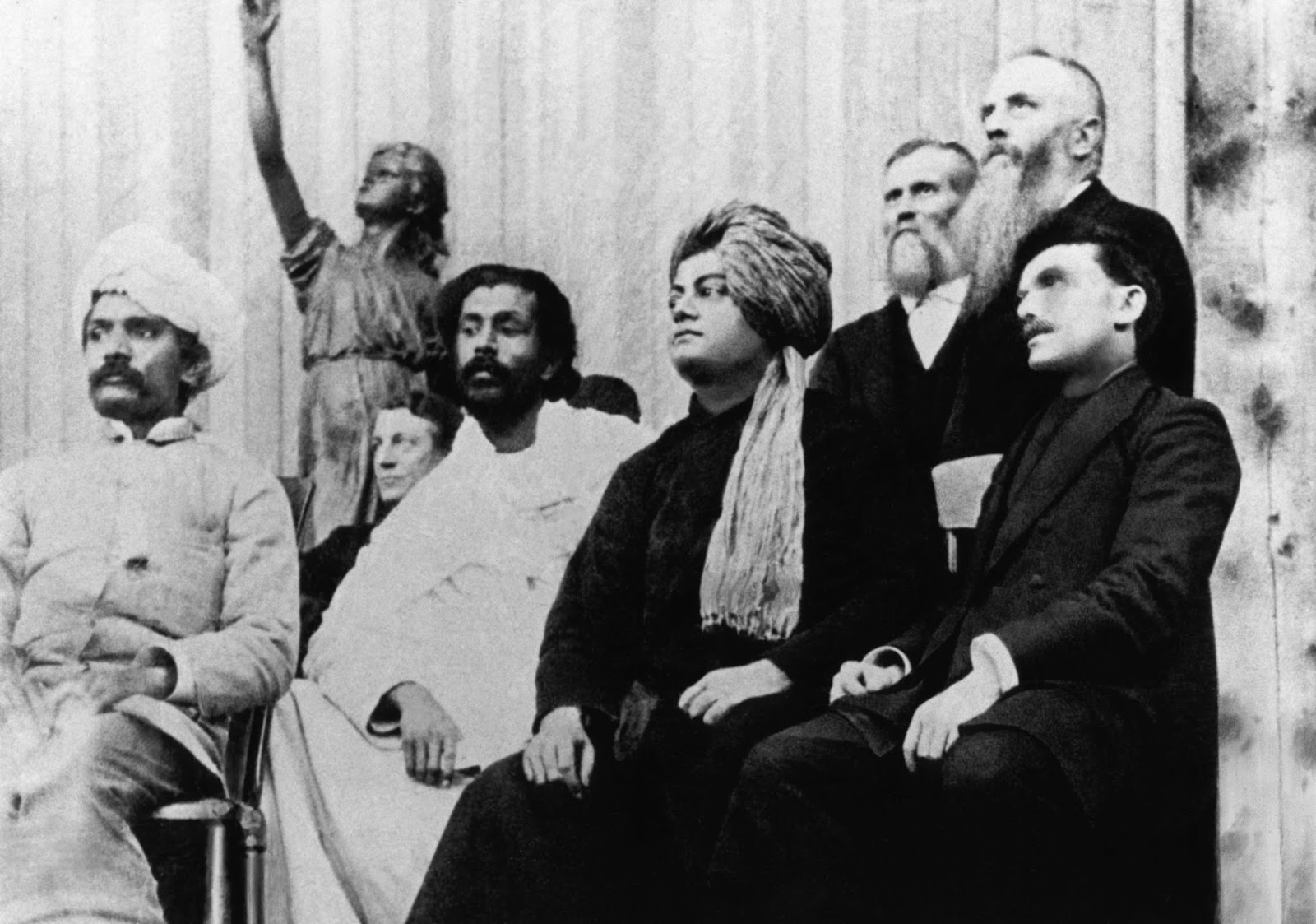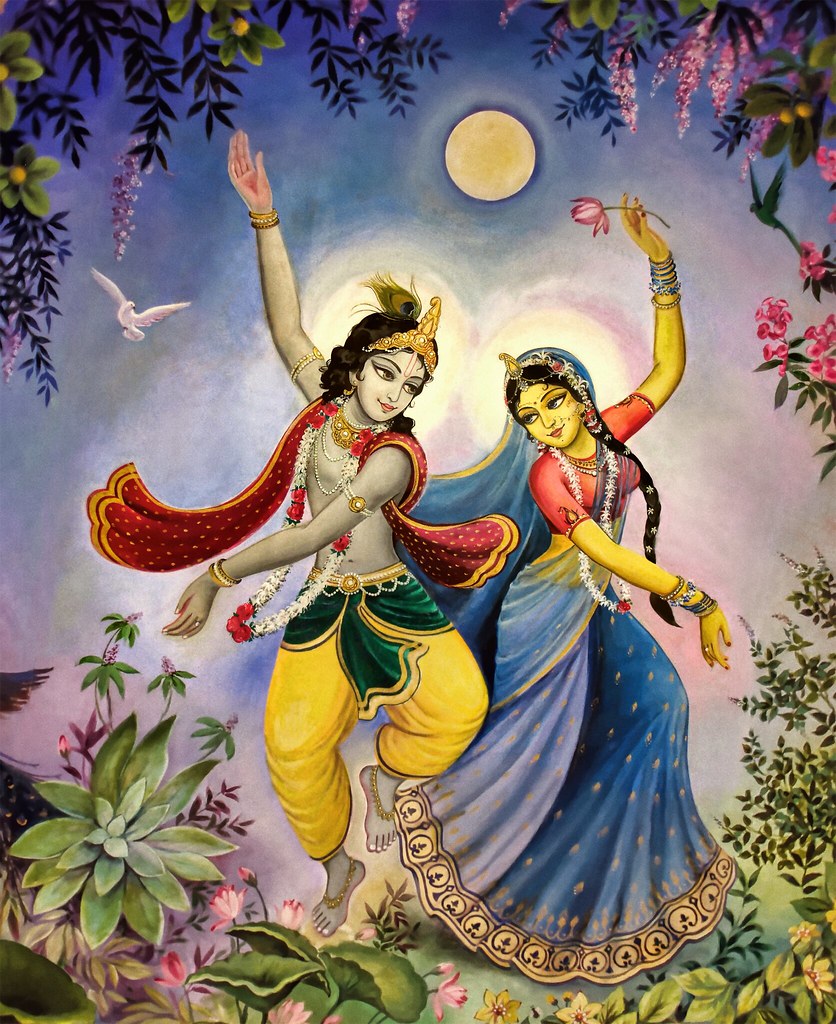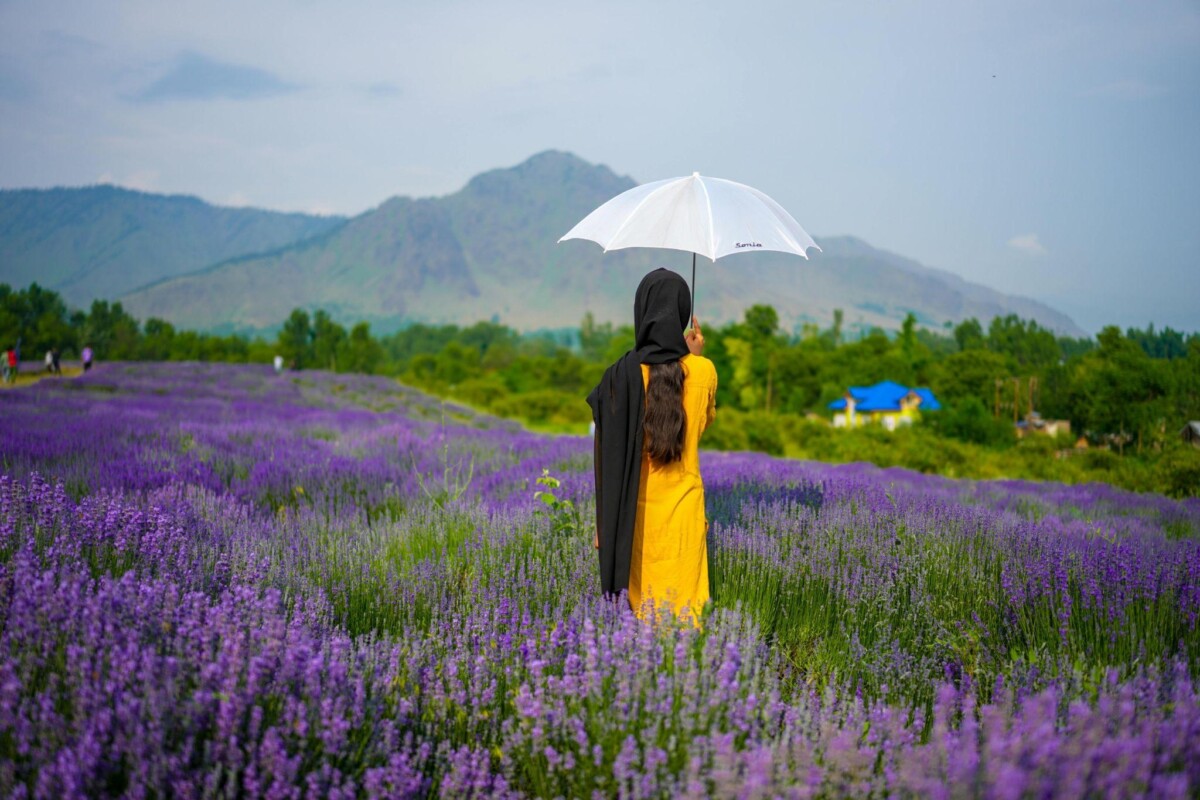

Amid rolling fields of lavender, a yellow-clad woman stands beneath the shade of her umbrella, gazing at the picturesque landscape of the Kashmir Valley.
1. The festival is dedicated to Ragnya Devi: the guardian goddess of Kashmir
Kashmiri Shaivism, the dharmic practice native to the Kashmir Valley, espouses Shiva as the Supreme Being, making him the form of the Divine most cherished by adherents of the tradition.
This, however, doesn’t mean he’s the be-all and end-all of their observances.
As the sun is incomplete without the power of its rays, so too is Shiva without Shakti, Divinity’s feminine principle, whose compassionate light permeates the world, nurturing all facets of existence. Thus recognizing the profound role she plays in providing universal balance, devotees observe a number of festivals in her honor, focusing on various goddesses of specific importance. Naturally, these include some of India’s more popular icons, like Parvati, Lakshmi, Saraswati, and Durga. Yet, for many of the Kashmiri tradition, it’s a different, more obscure goddess, who reigns supreme.
Through volatile times and difficult chapters, Kashmiri Pandits — Kashmir’s indigenous Hindu community — have weathered many ups and downs over the years. Because of this, Kheer Bhawani Mela, the annual celebration dedicated to Ragnya Devi, the guardian goddess of the region, holds an especially poignant place in their hearts.
Observed during the Hindu month of Jyestha (May/June), as spring gives way to summer, her festival is one of prosperity and abundance, reminding followers that her compassion is inexhaustible. That, in even the darkest of times, she is with them, offering love, strength, and unshakeable resilience.
2. It originated in the village of Tulmulla
According to Kashmiri lore, Ragnya Devi’s origin, while indistinct throughout major texts, is closely tied to one of India’s most well-known figures, Ravana, the power-hungry antagonist of The Ramayana.
Once, as the story goes, Ravana engaged in rigorous penance, hoping to invoke Shakti’s blessings on his kingdom. Intense as his devotion was, the Divine mother indeed became pleased, and so appeared before him as Ragnya Devi, agreeing to reside in Lanka and shower the land with her blessings. As Ravana’s kingdom grew in opulence, however, so did his ego and ambition. Straying further and further from the path of dharma, or righteousness, his behavior grew increasingly heinous, until, in a complete and utter act of depravity, he did the unthinkable and abducted Rama’s wife, Sita, who is a goddess in her own right.
Displeased by the egregious transgression, Ragnya Devi decided to withdraw her blessings from the kingdom. Thus appearing in her close followers’ dreams, she asked they remove her icon from Ravana’s shrine and relocate to a place devoid of greed and corruption. Traveling north, the journey was fraught with challenges but, in time, they eventually reached Kashmir, where they settled at the village of Tulmulla, a place of breathtaking beauty. Drawn by the area’s innate purity, they established her icon near a natural spring, its sacred waters officially becoming the location of her new abode.
Before long, the rituals performed in her honor resumed, and before long the place became a sanctuary for Kashmiri Pandits. The goddess of their land, her divine presence inspired them to push her veneration to new levels, culminating, of course, in Kheer Bhawani Mela, the ultimate expression of their gratitude.
3. It’s believed to have once been the largest Hindu gathering in Kashmir
As Ragnya Devi’s temple and veneration grew over the centuries, so did her festival, becoming what is believed to have been Kashmir’s largest Hindu gathering, attracting tens of thousands from across and beyond the region.
Beginning in 1989, however, everything changed when an insurgency sponsored by Pakistan’s military and intelligence service inundated the Valley, aiming to cleanse non-Muslims from Kashmir for the purpose of changing the state’s demographics. The target of rapes, killings, and destruction of properties, Hindus endured a brutal campaign of terror, forcing more than 350,000 Kashmiri Pandits to flee their homeland over the next two years. Their temples, once bustling with activity, now lay in desolation, the festivals replaced by emptiness and silence.
Yet, hope flickered on, for even in exile, they clung to their traditions.
Amidst the squalor of refugee camps, the uncertainty of displacement, and the trials of forging a new home and future, Pandits persevered in their dedication to Ragnya Devi, always finding ways to honor the goddess. Offerings were prepared over makeshift stoves, shrines were built out of modest resources, stories of her land and the celebrations held there were passed to the generations born after.
Forced though they were to live in separation from their homeland, the community leaned ever deeper into their spiritual identity, each act of devotion marked by a resolve to one day return to Tulmulla, regardless of the obstacles.
4. It serves as a symbol of interfaith harmony
The violence that tore through Kashmir during its ethnic cleansing was a thorough one, laying waste not only to Pandits and their homes, but their places of veneration too, including temples, shrines, and other sites of sacred significance. Despite this, Ragnya Devi and her spring withstood the storm — thanks not only to the efforts of the Indian Army.
Yes, Islamist forces were behind the attacks, and yes, these attacks were the culmination of long-standing efforts to deepen religious divides. Still, as the insurgency erupted, moving Muslims across the Valley to follow suit, the Muslims of Tulmulla did just the opposite. As many had grown up alongside Pandits, witnessing or even participating in the temple’s activities themselves, many felt compelled to protect its premises in the Pandits’ absence. Thus sweeping floors, lighting lamps, and ensuring no harm came to the shrine, they safeguarded the temple’s sanctity, seeing Ragnya Devi not only as the goddess of Pandits, but the goddess of Kashmir, who looked after everybody of the land, regardless of religion.
Fortunately, the violence — while never completely gone — began subsiding by the late ‘90s, rousing Pandits to make the pilgrim’s return, slowly but surely. Needless to say, they journeyed in a mood of poignant trepidation, uncertain what scene would meet them upon their arrival. When, however, they discovered the site intact, still-kept, and in surprisingly good condition, an ineffable relief washed over them.
Greeted by the local Muslims with tenderness and warmth, their gratitude knew no bounds as they finally reunited with the goddess and her temple. Once again they could celebrate Kheer Bhawani Mela in their homeland and begin restoring the festival to its former glory. Once again her celebration could reign as a symbol of their dedication, as well as a symbol of interfaith harmony and devotion.
5. For many, the festival starts days in advance
Today, tens of thousands flock to Tulmulla for the festival as they did before Kashmir’s cleansing, making Kheer Bhawani Mela once more a pilgrims’ event. For many, this means celebrations begin days in advance, with preparations at home for the journey.
Early morning baths, carefully packed offerings, traditional attire — these are more than mere rituals. They are the first acts of observance, the first acts of drawing one’s consciousness to the platform of veneration. They, along with the sharing of Ragnya Devi’s stories and pastimes, capture the mind and ensnare the senses, exciting devotees for the adventure to come. Charged thus with a mood of gratitude, their departure is done with an open heart, ready to receive her blessings in whatever shape they appear.
Along the way, this might include the small shrines they pay homage to on the side of the roads, or the natural wonders of the windswept landscape in all its glory. But, of course, the benediction they thirst for most is that of their final destination — to see the radiant temple complex that houses the goddess of their hearts. There, in those tranquil grounds, they can truly bask in her presence, experiencing the power of her spirit, not only through her icon but her sacred spring, which is said to reflect her divine will in its changing colors.
Naturally, the festival is a time to surrender oneself to this will through various offerings, including lush gifts of gold, silver, fine cloth, and expensive oils. Yet, these act only as supplements, for it’s a far different item Ragnya Devi is known to desire. As waves of devotees flood the precincts, singing their songs and chanting their mantras, the central offering amongst them is a sweet rice pudding referred to as kheer, hence the name of the festival.
Presented in quiet reverence, the preparation’s simplicity serves as a humble gesture of their love. It is a token of the kind of devotion the festival is all about: pure, nourishing, and devoid of corruption.
https://www.hinduamerican.org/projects/human-rights-report/kashmir-2021


